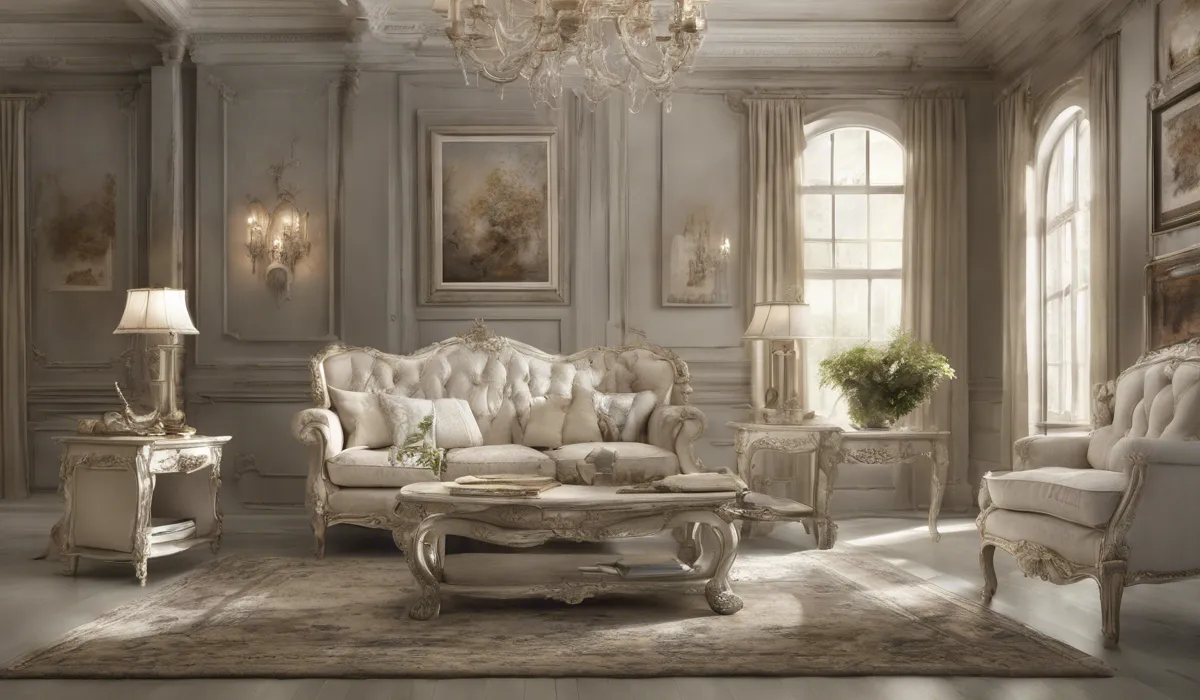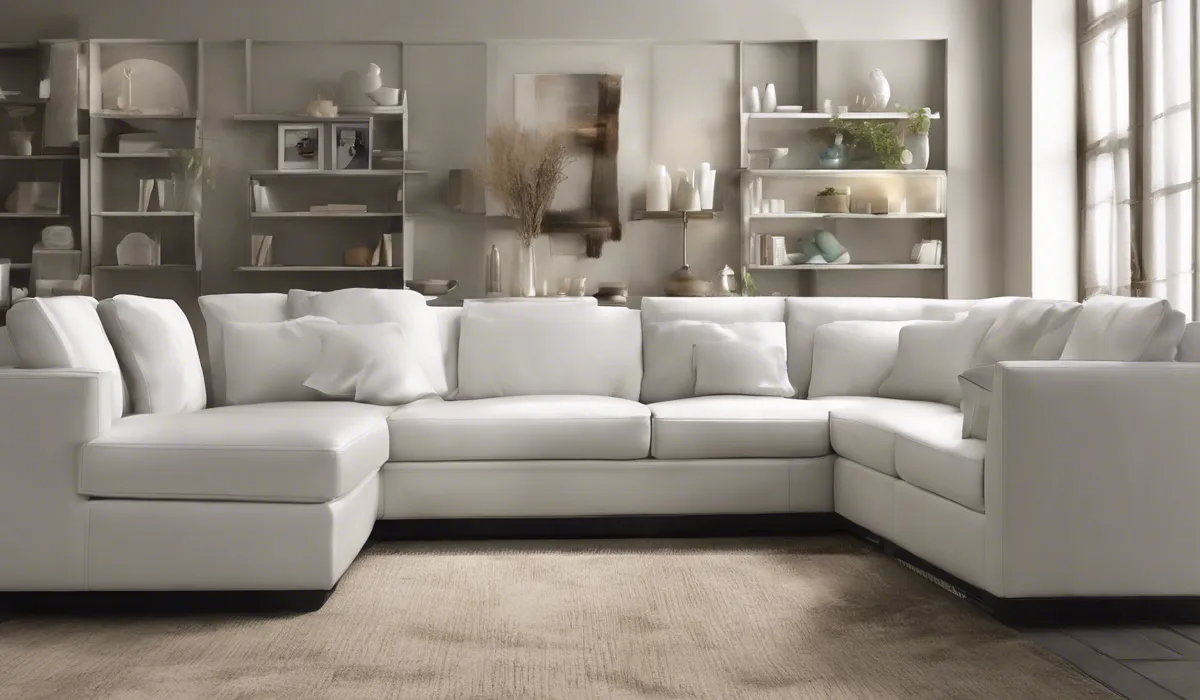Mold grows on furniture due to excess moisture and lack of air circulation. It often occurs in humid conditions or when furniture is exposed to spills and not dried properly. Ensure your space is well-ventilated and dry to prevent mold.
Causes of Mold Growth on Furniture

High Humidity Levels
Mold thrives in damp environments. When the air in your home holds a lot of moisture, your furniture can absorb it, creating a perfect habitat for mold.
This is especially true in climates that are naturally humid or in houses without proper moisture control. Keeping indoor humidity levels below 60 percent can help prevent mold growth.
Lack of Ventilation
Rooms that lack airflow can trap moist air and become breeding grounds for mold. Furniture placed against walls or in corners where air does not circulate well is at higher risk.
Ensuring that air moves freely through your home can help in drying out potential mold hotspots and stop mold from settling on your furniture.
Temperature Fluctuations
Mold can grow in a wide range of temperatures, but it especially likes warm conditions. When temperatures vary, condensation can form on surfaces like furniture, feeding mold spores.
Stabilizing indoor temperatures helps prevent condensation and mold growth.
Moisture from Spills and Leaks
Accidental spills or plumbing leaks that are not promptly addressed can soak into your furniture, providing the moisture that mold needs to grow.
It’s important to clean and dry any wet spots on furniture immediately to prevent mold from taking hold.
Organic Materials in Furniture
Many furniture items are made of organic materials like wood, fabric, and leather, which are food sources for mold.
By choosing materials that are less prone to mold or treating them with mold inhibitors, you can reduce the risk of mold taking over your furniture.
Preventing Mold on Furniture

Controlling Indoor Humidity
Maintaining a balanced humidity level in your home is critical for preventing mold. Use dehumidifiers or air conditioners during humid months to keep the air dry.
A hygrometer can help you monitor the humidity levels to ensure they stay in a safe range.
Ensuring Proper Ventilation
Good airflow can prevent mold by drying out any moisture that may accumulate on furniture.
Use fans or open windows to increase circulation, especially in areas like basements and bathrooms where mold is more likely to grow.
Regular Cleaning and Maintenance
Keeping furniture clean and dust-free can reduce the food source for mold. Vacuum and wipe down surfaces regularly, and consider using furniture covers that can be washed frequently to maintain cleanliness.
Using Mold-Resistant Products
There are paints, sprays, and other products available that can help prevent mold from growing on furniture.
When purchasing new items or treating existing ones, look for mold-resistant labels or apply mold-preventing solutions.
Immediate Action on Water Incidents
When spills or leaks occur, it’s important to act fast. Remove any wet items, dry the area thoroughly, and use fans or dehumidifiers to help evaporate any lingering moisture.
This quick response can be the difference between a minor incident and a major mold problem.
Remediation and Cleaning Mold from Furniture

Safety Precautions Before Cleaning
Before tackling mold, protect yourself with gloves, a mask, and goggles to prevent contact with spores.
Ensure the room is well-ventilated to avoid inhaling mold spores during the cleaning process.
Natural vs. Chemical Cleaning Agents
You can choose between natural solutions like vinegar and baking soda or chemical mold removers.
Natural options are safer for the environment and your health but may be less effective on tough mold. Chemical options can be more powerful but should be used with caution.
Step-by-Step Cleaning Process
Begin by lightly misting the moldy area with water to prevent spores from becoming airborne. Then, apply your chosen cleaning agent and gently scrub the mold away.
After cleaning, thoroughly dry the furniture and dispose of any rags or sponges used in the process.
When to Seek Professional Help?
If mold covers a large area or you’re dealing with toxic black mold, it’s best to call in professionals.
They have the right equipment and experience to safely and effectively remove the mold without risking your health.
Post-Cleanup: Preventing Future Mold Growth
After cleaning, stay vigilant to prevent mold from returning. Continue to control humidity, ventilate your home, and clean regularly.
Inspect your furniture often, especially during wet seasons, to catch any new mold growth early.
FAQs About Mold on Furniture
Why is mold appearing on my furniture?
Mold grows on furniture due to excess moisture, lack of air circulation, and humid conditions, especially if spills occur and the furniture isn’t dried thoroughly.
What conditions cause mold to grow on furniture?
Mold thrives in humid conditions with poor air circulation and when furniture is continuously exposed to moisture, such as from spills or high indoor humidity levels.
How can I prevent mold from growing on my furniture?
To prevent mold, ensure your space is well-ventilated, maintain low humidity levels, and promptly dry any spills or moisture on the furniture.
Can a lack of air circulation lead to mold on furniture?
Yes, inadequate air circulation can contribute to mold growth on furniture by allowing moisture to accumulate and not allowing it to evaporate properly.
What should I do if my furniture is frequently exposed to spills?
If your furniture is often exposed to spills, dry it immediately and thoroughly to prevent moisture from seeping into the material and creating a breeding ground for mold.
Final Thoughts
Mold on furniture is typically a result of high moisture levels and poor air circulation. This issue is exacerbated in humid climates or when liquid spills are not promptly and thoroughly dried.
To prevent mold growth, it is crucial to maintain a dry and well-ventilated environment for your furniture.
